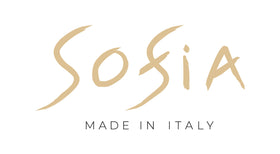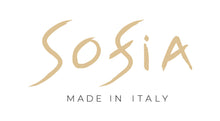Innovations in Italian Leather and Textile Industries
The Italian leather and textile industries, renowned for their artisanship and heritage, have experienced substantial innovations in recent years. As sustainability becomes a focal point across industries, both leather and textile sectors in Italy have embraced eco-friendly practices and cutting-edge technologies to meet the demands of the modern market.
Innovations in the Italian Leather Industry:
The Italian leather industry has witnessed a transformative shift towards sustainability. Traditionally associated with luxurious products, Italian leather manufacturers are now adopting environmentally friendly practices. One notable innovation is the increased exploitation of vegetable tanning processes. Unlike traditional methods involving harsh chemicals, vegetable tanning uses natural extracts, reducing environmental impact and creating a healthier workplace for artisans.

LIA
Another noteworthy development is the emphasis on circular economy practices within the leather industry. Manufacturers are exploring ways to minimize waste by recycling leather remnants and adopting upcycling techniques. This not only aligns with sustainability goals but also contributes to the creation of unique, limited-edition products, appealing to consumers' growing interest in individualized and eco-conscious choices.

CARLOTA
In terms of product development, Italian leather artisans continue to display their expertise in creating distinctive finishes. Innovations in finishing techniques, such as embossing, laser engraving, and hand painting, enable the production of leather goods with unparalleled aesthetics. These finishes not only enhance the visual appeal but also contribute to the individuality of each product.

Digitalization has become a key driver of efficiency and customization in the Italian leather industry. From design to production, digital technologies integrated into various processes. Computer-aided design (CAD) tools allow for intricate design work and precise prototyping. Additionally, the adoption of digital platforms facilitates smoother communication and collaboration among stakeholders in the supply chain, leading to more streamlined and responsive production processes.

KENZI GREY SNAKE CHAIN SHOULDER BAG
The exploration of alternative materials is another avenue of innovation in the Italian leather industry. Some manufacturers are investing in research and development to create bio-based or lab-grown leather, aiming to reduce the environmental impact of traditional leather production. These alternatives may offer similar qualities to conventional leather while addressing ethical and environmental concerns associated with the industry.

Innovations in the Italian Textile Industry:
Similar to the leather industry, the Italian textile sector has seen a surge in sustainable practices. Circular economy initiatives, such as textile recycling and upcycling, are gaining momentum. Textile manufacturers are investing in technologies that allow them to repurpose post-consumer and post-industrial textile waste, contributing to a more sustainable and resource-efficient industry.

In terms of fabric innovation, Italian textile manufacturers are developing materials with enhanced functionality. Fabrics with moisture-wicking properties, UV protection, and antimicrobial finishes are becoming more prevalent. These advanced features cater to consumer preferences for performance-driven textiles in various sectors, including active wear, outdoor gear, and medical textiles.

Digital printing technology has revolutionized textile design and production. Italian textile companies are increasingly adopting digital printing techniques, offering advantages such as precise colour reproduction, intricate detailing, and reduced environmental impact compared to traditional printing methods. This shift towards digitalization not only enhances design possibilities but also contributes to more sustainable and efficient manufacturing processes.

Collaboration is a key aspect of innovation in the Italian textile industry. Manufacturers often collaborate with fashion designers, architects, and artists to push the boundaries of traditional textile design. These interdisciplinary partnerships result in the creation of unique and avant-garde textiles, setting trends in the global market.

The integration of smart textiles marks another notable innovation in the Italian textile industry. Fabrics with embedded sensors or conductive elements open up new possibilities for applications in various sectors. Smart textiles can be utilized in healthcare for monitoring vital signs, in sports for performance tracking, and in fashion for interactive and tech-enhanced garments.

In conclusion, the Italian leather and textile industries are undergoing significant transformations driven by sustainability, digitalization, and a commitment to innovation. These sectors continue to uphold their reputation for quality and craftsmanship while embracing new technologies and practices that align with the evolving needs and values of consumers in the 21st century.







